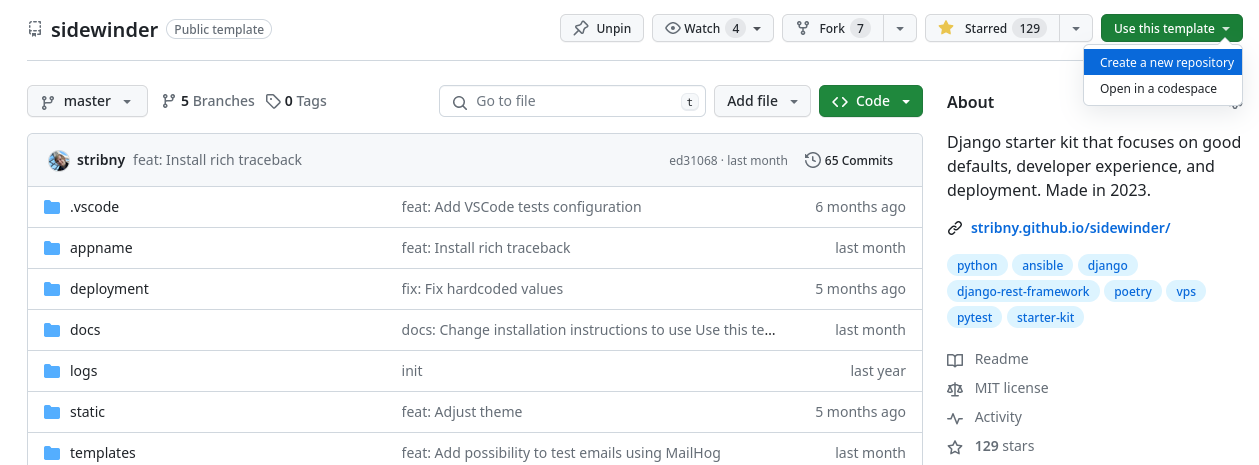Template repositories on GitHub
If you have a repository that serves as a template, that is as some sort of starting point for other people to use, it is a good idea to mark it as a template on GitHub. If you do so, people don't have to fork the repository and can create a new repository based on the template without the baggage of commit history or connection to the template itself.
The official docs on this feature highlight the differences between templates and standard repositories:
A new fork includes the entire commit history of the parent repository, while a repository created from a template starts with a single commit.
Commits to a fork don't appear in your contributions graph, while commits to a repository created from a template do appear in your contribution graph.
A fork can be a temporary way to contribute code to an existing project, while creating a repository from a template starts a new project quickly.
You can set the repository as template in the settings:
Once set, users will get a new “Use this template” button:
So if your template doesn’t come with some form of a code generator, marking the repository as a template gives users more convenience in using it.
Until next time,
Petr



